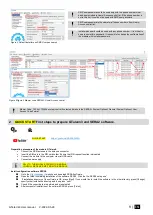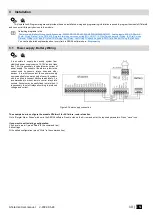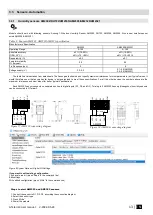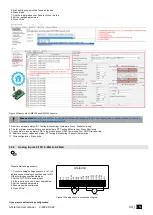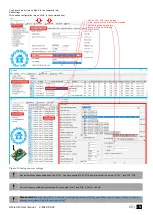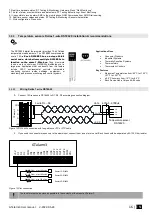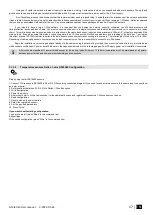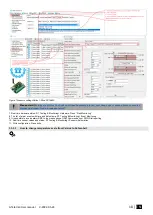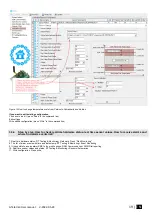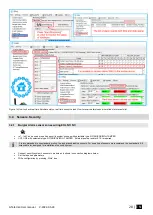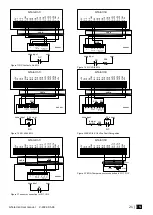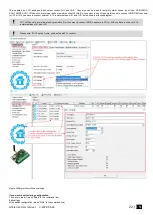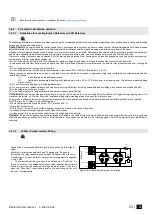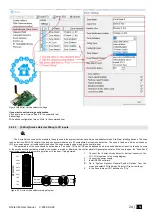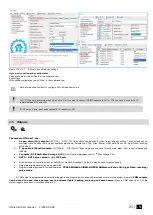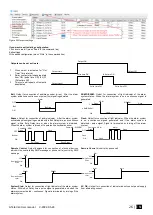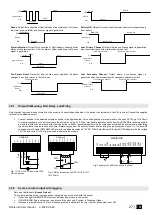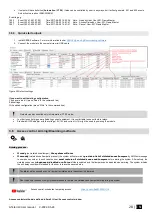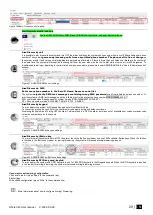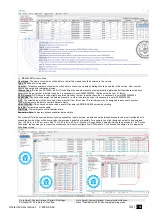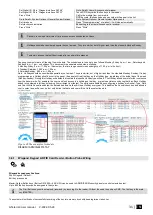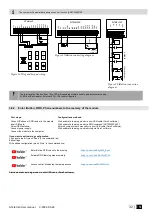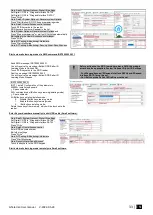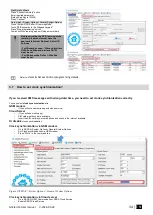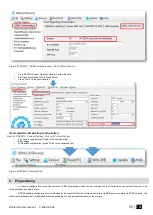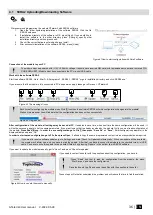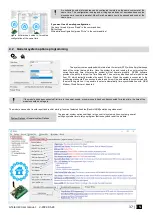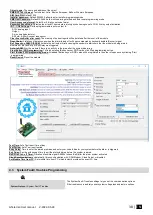
GTalarm3 User manual V-2022-05-24
23 |
E N
3.4.2
Fire alarm and Smoke sensors
3.4.2.1
Guidelines for Locating Smoke Detectors and CO Detectors
The following information is for general guidance only and it is recommended that local fire codes and regulations be consulted when locating and installing
smoke and carbon monoxide alarms.
Smoke Detectors. Research indicates that all hostile fires in homes generate smoke to a greater or lesser extent. Detectable quantities of smoke precede
detectable levels of heat in most cases. Smoke alarms should be installed outside of each sleeping area and on each level of the home.
Additional smoke alarms beyond those required for minimum protection be installed. Additional areas that should be protected include: the basement;
bedrooms, especially where smokers sleep; dining rooms; furnace and utility rooms; and any hallways not protected by the required units.
On smooth ceilings, detectors may be spaced 9.1m (30 feet) apart as a guide. Other spacing may be required depending on ceiling height, air movement,
the presence of joists, uninsulated ceilings, etc.
• Do not locate smoke detectors at the top of peaked or gabled ceilings; dead air space in these locations may prevent smoke detection.
• Avoid areas with turbulent air flow, such as near doors, fans or windows. Rapid air movement around the detector may prevent smoke from entering the
unit.
• Do not locate detectors in areas of high humidity.
• Do not locate detectors in areas where the temperature rises above 38
o
C (100
o
F) or falls below 5
o
C (41
o
F).
Where required by applicable laws, codes, or standards for a specific type of occupancy, approved single- and multiple-station smoke alarms shall be
installed as follows:
(1)
In all sleeping rooms and guest rooms.
(2)
Outside of each separate dwelling unit sleeping area, within 6.4 m (21 ft) of any door to a sleeping room, the distance measured along
a path of travel.
(3) On every level of a dwelling unit, including basements.
(4) On every level of a residential board and care occupancy (small facility), including basements and excluding crawl spaces and unfinished attics.
(5) In the living area(s) of a guest suite.
(6) In the living area(s) of a residential board and care occupancy (small facility).
CO Detectors. Carbon monoxide gas moves freely in the air. The human body is most vulnerable to the effects of CO gas during sleeping hours. For
maximum protection, a CO alarm should be located outside primary sleeping areas or on each level of your home.
The electronic sensor detects carbon monoxide, measures the concentration and sounds a loud alarm before a potentially harmful level is reached.
Do NOT place the CO alarm in the following areas:
• Where the temperature may drop below -10ºC or exceed 40 ºC.
• Near paint thinner fumes.
• Within 5 feet (1.5 meters) of open flame appliances such as furnaces, stoves and fireplaces.
• In exhaust streams from gas engines, vents, flues or chimneys.
• In close proximity to an automobile exhaust pipe; this will damage the detector.
GTalarm3. Begin the installation by mounting additional modules in the cabinet using the stand-offs provided, then mount the cabinet in a dry, protected
area with access to un switched AC power. Install hardware in the sequence indicated in the following pages. Do NOT apply power until installation is
complete.
3.4.2.2
[4-Wire] Smoke detector Wiring
Connect the 4-wire smoke detectors and a relay as shown in the figure
below.
Install the 4-wire smoke detectors with 18 gauge wire. If power is
interrupted, the relay causes the control panel to transmit the Fire Loop
Trouble report. To reset (unlatch), connect the smoke detector’s negative
(-) to a PGM.
The parameters of the zone
should be defined as a “Fire Zone”. If a
line short occurs or the smoke detector activates, whether the system is
armed or disarmed, the control panel will generate an alarm. If the line is
open, the “Zone Fault” report code is sent to the monitoring station or to
the user, if programmed.
-
+
-
+
IN1...IN4
COM
OUT1...OUT4
+VD
Smoke
detector
Smoke
detector
NO
EOL
2.2k
G
Ta
la
rm
3
Figure 24 4-Wire Smoke Detector Installation
More information about how to configure the zones:

